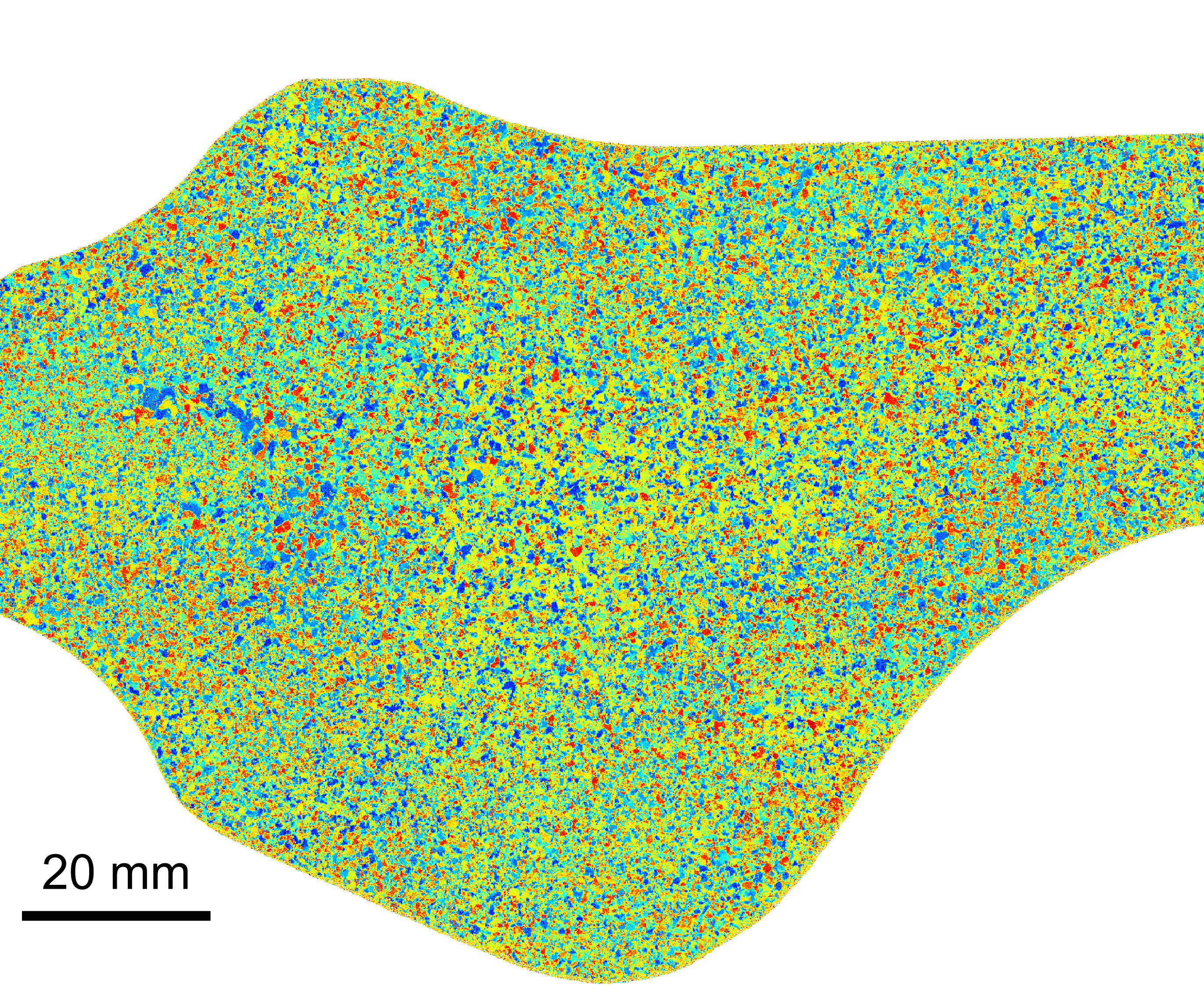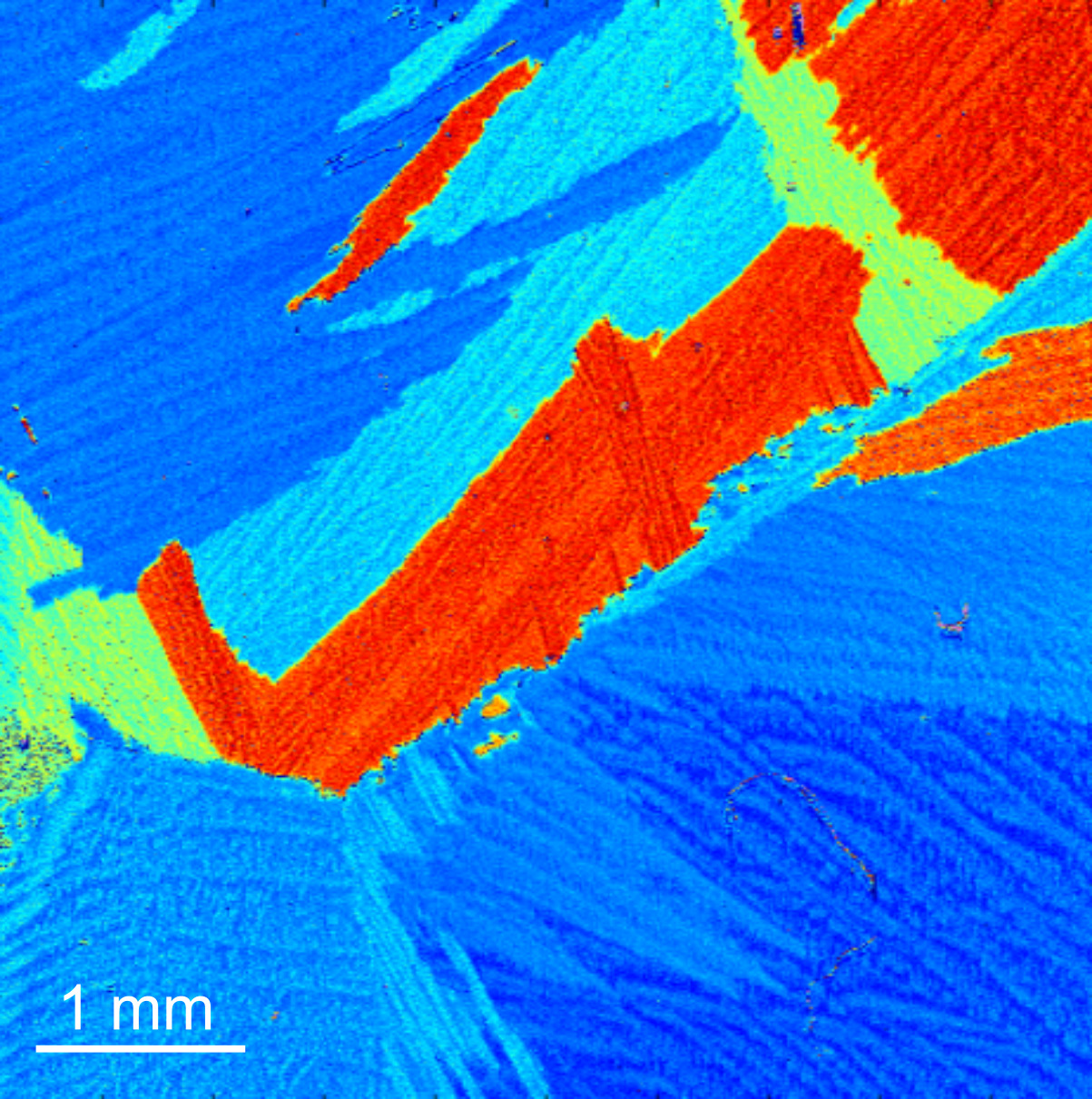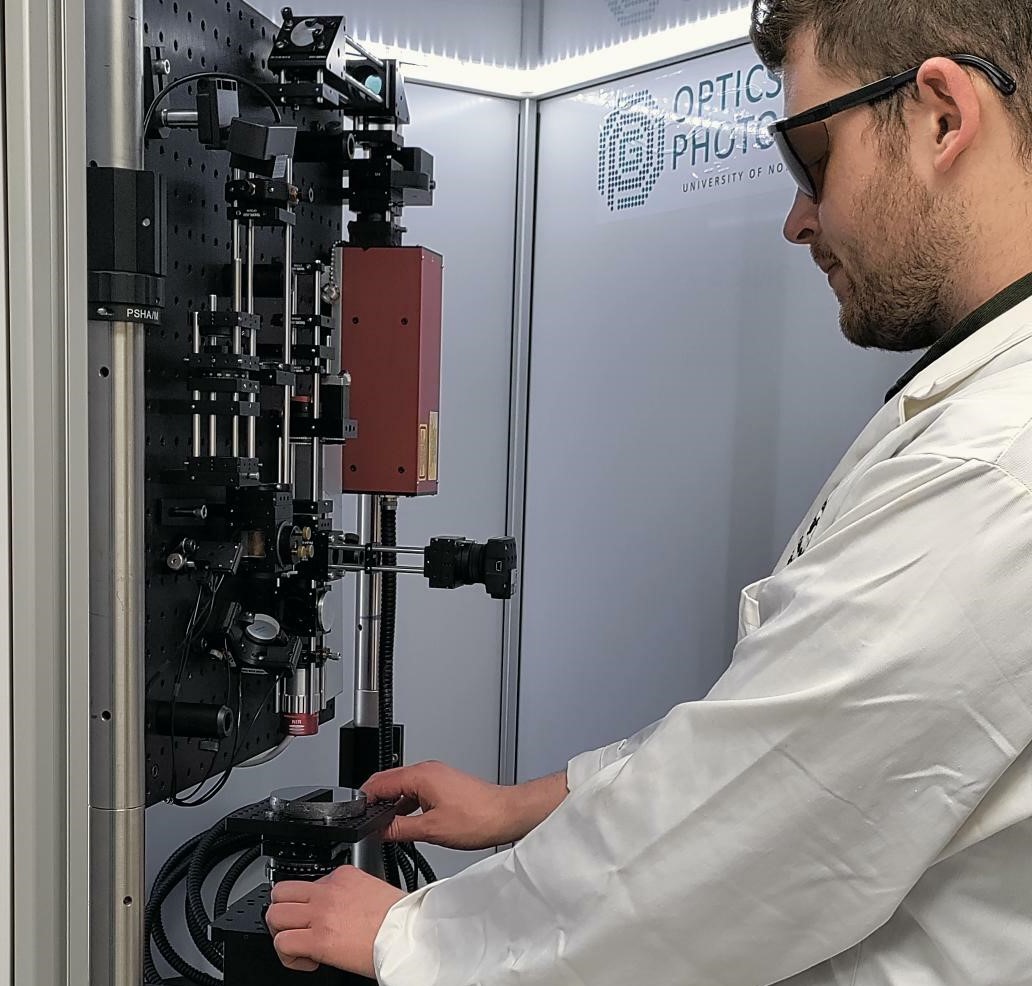Friday, 11 February 2022
Researchers at the University of Nottingham have devised a revolutionary new technique for measuring the microscopic elasticity of materials for the first time. Known as SRAS, the technology works by measuring the speed of sound across the material’s surface.
The Engineering and Physical Sciences Research Council (EPSRC)-funded innovation uses high-frequency ultrasound to produce microscopic resolution images of the microstructure and maps the relationship between stresses and strains in the material (the elasticity matrix). These crystals are normally invisible to the naked eye, but by precisely measuring the speed of sound across the surface of these crystals, their orientation and the inherent elasticity of the material can be revealed.


This technology is already starting to be used in fields such as aerospace to understand the performance of new materials and manufacturing processes. In the future, this will launch a new field of research as the technique is used as a completely new way to evaluate materials for improving safety in systems such as jet engine turbine blades or develop new designer alloys with tailored stiffness. For example, in medical implants, it is vital to match the stiffness of prosthetic devices to the properties of the human body to ensure harmonious operation.
Paul Dryburgh, co-lead on the study - from the Optics and Photonics Research Group at the University of Nottingham - said, “Many materials (such as metals) are made up of small crystals. The shape and stiffness of these crystals are essential to the material's performance. This means that if we tried to pull on the material, as we would a spring, the stretchiness depends on the size, shape, and orientation of each of these hundreds, thousands or even millions of crystals. This complex behaviour makes it impossible to determine the inherent microscopic stiffness. This has been an issue for over 100 years, as we’ve lacked an adequate means to measure this property.”

"The development of SRAS++ is a notable breakthrough because it provides the first method to measure the elasticity matrix without knowing the distribution of crystals in the material. SRAS doesn’t require exacting preparation of a single crystal; it is fast (thousands of measurements can be made every second) and offers unparalleled measurement accuracy. The speed of the technique is such that we estimate that we could repeat all the historical elasticity measurements of the past 100 years within the next six months.”
There is a great push for new lighter and stronger materials to deliver more efficient systems. However, finding a new material with the desired properties has been described as a needle in a haystack problem. Along with the stiffness of the material, the elasticity matrix also provides insight into many important material properties that are hard to measure directly, such as how the material responds to changes in temperature. This means the rapid measurement of the elasticity matrix can be used as a ‘road map’ to finding the next-generation materials with superior properties, making SRAS++ an essential tool in the development of new materials.

Previously, the only way to measure the elasticity matrix was to cut up the component or attempt to grow a single crystal of the material, a process that cannot be done for many materials, such as the titanium alloys used in modern jet engines. Estimates are that less than 200 materials have (of the many thousands) had their elasticity measured. The result is that the elasticity of most industrial materials is unknown, meaning there is significant (and in some cases, potentially hazardous) uncertainty in the actual performance of the material put to use.
Laser ultrasound, the science of turning high-energy optical energy into sound, allows ultrasound to be created in an extremely small area (200 µm, approx. the same width as 2-3 human hairs). This means the researchers can precisely create sound waves in each of these crystals in the metal one by one; by then measuring the speed of sound across each crystal, they can tell the shape of the crystals and the elasticity matrix of the material at a microscopic scale. Sound travels across the surface of metals 10 times faster than through air (at ~3000 m/s).
The findings are reported in a new paper, entitled ‘Measurement of the single crystal elasticity matrix of polycrystalline materials', published in the leading journal, Acta Materalia.
Story credits
More information is available from Dr Paul Dryburgh in the Optics and Photonics Research Group on paul.dryburgh@nottingham.ac.uk or Professor Matt Clark on matt.clark@nottingham.ac.uk or Emma Lowry, Media Relations Manager (Engineering) on emma.lowry@nottingham.ac.uk
Notes to editors:
About the University of Nottingham
Ranked 97 in the world and 17th in the UK by the QS World University Rankings, the University of Nottingham is a founding member of Russell Group of research-intensive universities. Studying at the University of Nottingham is a life-changing experience, and we pride ourselves on unlocking the potential of our students. We have a pioneering spirit, expressed in the vision of our founder Sir Jesse Boot, which has seen us lead the way in establishing campuses in China and Malaysia - part of a globally connected network of education, research and industrial engagement.
Nottingham was crowned Sports University of the Year by The Times and Sunday Times Good University Guide 2024 – the third time it has been given the honour since 2018 – and by the Daily Mail University Guide 2024.
The university is among the best universities in the UK for the strength of our research, positioned seventh for research power in the UK according to REF 2021. The birthplace of discoveries such as MRI and ibuprofen, our innovations transform lives and tackle global problems such as sustainable food supplies, ending modern slavery, developing greener transport, and reducing reliance on fossil fuels.
The university is a major employer and industry partner - locally and globally - and our graduates are the third most targeted by the UK's top employers, according to The Graduate Market in 2024 report by High Fliers Research.
We lead the Universities for Nottingham initiative, in partnership with Nottingham Trent University, a pioneering collaboration between the city’s two world-class institutions to improve levels of prosperity, opportunity, sustainability, health and wellbeing for residents in the city and region we are proud to call home.
More news…